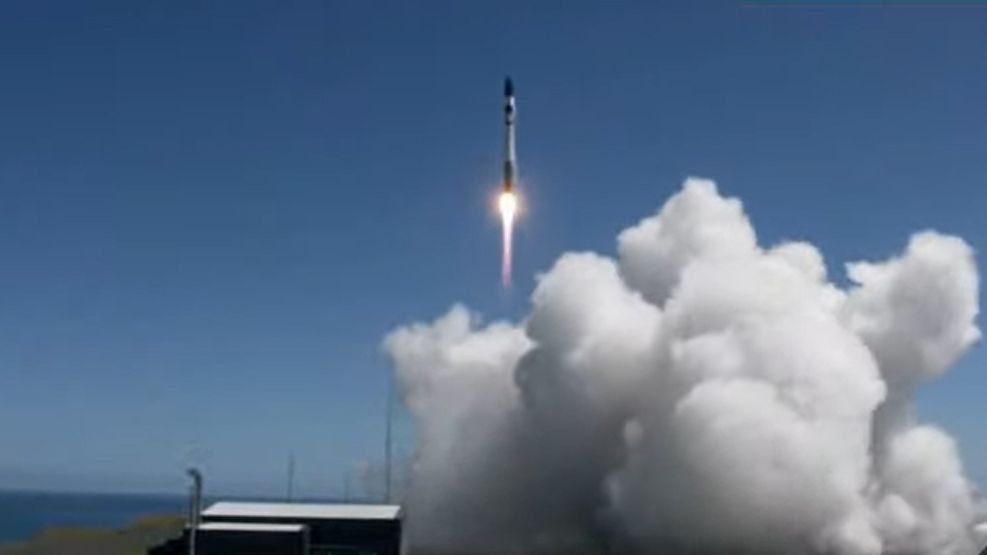Rocket Lab successfully launched two satellites into orbit and aimed to recover the mission’s booster, taking another step in its quest to build a partially reusable launch vehicle.
The company’s two-stage Electron rocket topped with two commercial Earth-observation satellites lifted off from Rocket Lab’s New Zealand site, on the North Island’s Mahia Peninsula, Wednesday (Nov. 17) at 8:38 p.m. EST (0138 GMT and 2:38 p.m. New Zealand time on Nov. 18).
The Electron’s first stage was scheduled to splash down softly under parachute about 18 minutes later in the Pacific Ocean a few hundred miles off the New Zealand coast, where a Rocket Lab recovery boat was waiting to fish it out of the sea and a helicopter flew overhead to spot it from the air.
Related: Rocket Lab and its Electron booster (photos)
“Splash down of the stage confirmed,” Rocket Lab CEO Peter Beck wrote on Twitter after the launch. “Helicopter has eyes on it.”
The Electron’s upper stage, meanwhile, continued powering its way to orbit, successfully deploying two satellites for the company BlackSky 55 minutes after liftoff at an altitude of 270 miles (430 kilometers).
“Perfect flight by the team,” Beck wrote.
Wednesday night’s mission, dubbed “Love At First Insight,” was the 22nd for Electron overall and its fifth of the year so far. All Electron launches to date have used brand-new rockets, but Rocket Lab aims to change that.
The California-based company has mapped out a plan to pluck falling Electron first stages out of the sky with a helicopter, inspect and refurbish the boosters, then return them to the launch pad for additional flights. Such reuse would cut costs for Rocket Lab and its customers and allow the company to significantly boost its launch rate, Rocket Lab representatives have said.
Rocket Lab has already demonstrated rocket-return tech and gathered data about how well its boosters survive the harsh conditions of reentry: “Love At First Insight” marked its third booster-recovery attempt, after successful efforts in November 2020 and May 2021.
But the “Love At First Insight” recovery attempt added a new wrinkle to the mix. Rocket Lab stationed a helicopter in the recovery zone “to track and visually observe a descending stage in preparation for future aerial capture attempts,” company representatives wrote in a mission press kit.
“The helicopter will not attempt a mid-air capture for this mission but will test communications and tracking to refine the concept of operations (CONOPS) for future Electron aerial capture,” they added.

The two spacecraft lofted on “Love At First Insight” are the eighth and ninth high-resolution, multispectral “Gen-2” satellites for BlackSky’s planned constellation.
“BlackSky combines high-resolution images captured by its constellation of microsatellites with its proprietary artificial intelligence software to deliver analytics and insights to industries including transportation, infrastructure, land use, defense, supply chain management and humanitarian aid,” Rocket Lab wrote in the press kit.
Rocket Lab will loft four more BlackSky satellites across two additional Electron launches to come, under the terms of a multi-launch deal signed earlier this year.
An Electron attempted to launch two BlackSky craft in May, but the rocket suffered a serious anomaly in its upper stage engine igniter system and both satellites were lost. Rocket Lab did manage to bring the Electron’s first stage down for a soft splashdown on that mission, which was called “Running Out Of Toes” (because it was the 20th Electron launch to date).
Mike Wall is the author of “Out There” (Grand Central Publishing, 2018; illustrated by Karl Tate), a book about the search for alien life. Follow him on Twitter @michaeldwall. Follow us on Twitter @Spacedotcom or Facebook.
